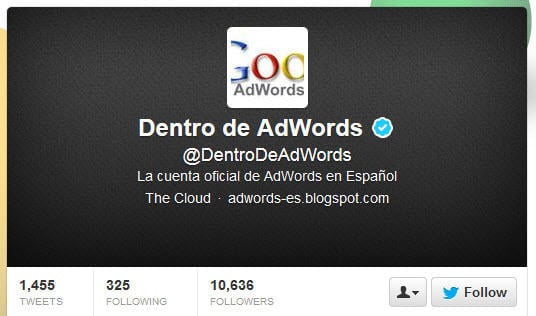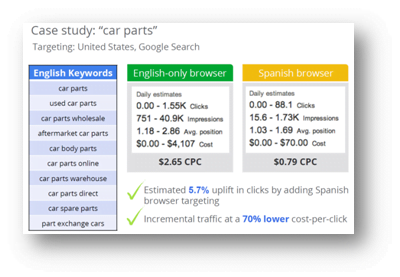
As digital marketers, we are always under the gun to drive more qualified searchers to our website. This can be a challenging job, especially once a PPC account is well-optimized.
So what do you do when your performance starts to plateau? Look for missed opportunities. Hands down, the most common area of missed opportunity I see in US-based accounts is not advertising to the bilingual, Hispanic community.

Why You Can’t Afford to Neglect the Spanish Language Market
The numbers speak for themselves. According to the 2010 census, there are 53 million Hispanics living in the United States, which comes to 17% of our total population. Not only that, but this group is projected to continue growing at a rapid rate. As you devise your digital marketing strategy, this is an important factor to keep in mind. While all US-based advertisers should consider this audience, it is particularly critical to those targeting a younger audience (the median age across Hispanic communities in the US is 27.6) or regions with particularly large Latino communities.
Ok, so you didn’t ace Spanish 101? Don’t worry, you don’t need to be fluent in order to expand your advertising to this ever-growing market. Remember, Google bases language targeting on a user’s interface language. Users can edit this setting to ensure Google provides results in their selected language. For example, if a Spanish speaker who lives in the US sets his interface settings to Spanish, he will only see Spanish results, even if he is searching on www.google.com. Google Ads (AdWords) will only display your ads if your language targeting matches a searchers’ interface language.
Here’s the key—according to Google, over 30% of online media consumption in the United States is conducted by searchers who use both Spanish and English interchangeably. These bilingual searchers tend to be a huge area of missed opportunity for US-based advertisers. If the primary language used in their households is Spanish, their browser settings are likely to be set to Spanish. However, they are also likely to conduct many searchers in English—therein lies the problem. If a business’s language targeting is set to English only, its ads will not show to this audience.
Make This Easy Change to Your Google Ads Campaigns NOW!
If your business is located in an area with a large Spanish-speaking population and your targeting is set to English-only, cancel whatever you have planned for the next ten minutes. Yes, this will be quick! All you have to do is identify your English-only campaigns and adjust your language targeting to include Spanish. Boom—you just expanded your PPC audience in a matter of a few clicks.
I know it sounds like we’re taking the easy route out by simply tweaking the settings and neglecting to build campaigns in Spanish. However, in some cases, the easy route is truly the best route. If your website doesn’t translate seamlessly or your sales/services aren’t offered in Spanish, you probably don’t want to risk advertising to a Spanish-only audience. While Spanish campaigns may help you to expand your impressions, it is not likely that you would see a proportional uptick in conversions.
Google recently shared results from a case study in which they applied this strategy.

As you can see, the benefits of the adjustments are clear. Not only did this advertiser experience an increase in click volume, they also found lower CPCs for the Spanish-speaking audience.
I highly recommend adjusting your strategy to include the Spanish-speaking population sooner rather than later. At this time, Latinos control $1 trillion in spending power in the US. This number is expected to grow 42% by 2017. It is critical to adapt your paid search campaigns before you miss out on great potential!
Buena suerte!







